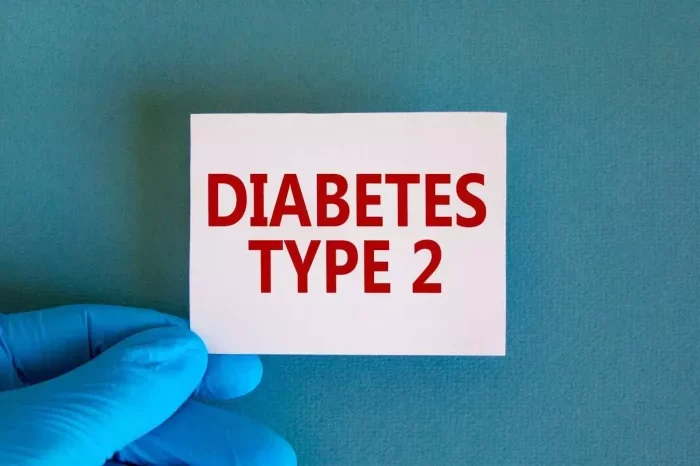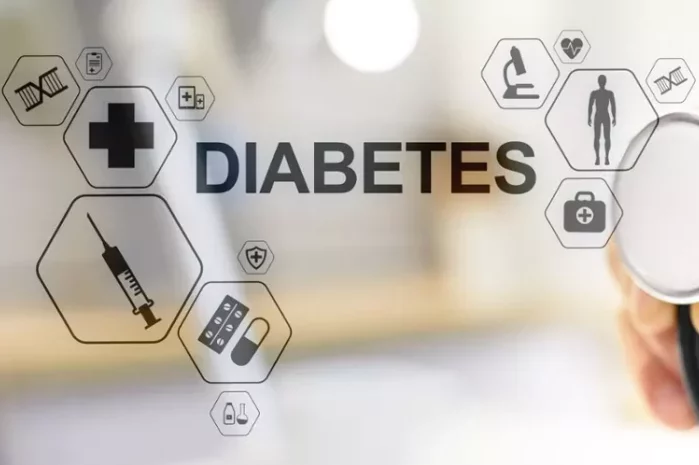Diabetes is a chronic health condition that affects how the body processes glucose, a vital source of energy for the cells. There are different types of diabetes, with Type 2 diabetes being the most common. This article aims to explore the concept of “the highest diabetes,” focusing on the implications of high blood sugar levels, the complications of poorly managed diabetes, and effective strategies for management.
Understanding Diabetes
What is Diabetes?
Diabetes is characterized by high blood sugar (glucose) levels due to insufficient insulin production or the body’s inability to effectively use insulin. Insulin is a hormone produced by the pancreas that allows cells to absorb glucose from the bloodstream for energy.
Types of Diabetes
Type 1 Diabetes: An autoimmune condition where the body attacks insulin-producing cells in the pancreas. It usually develops in children and young adults but can occur at any age.
Type 2 Diabetes: The most prevalent form, typically developing in adults, though it is increasingly seen in children and adolescents. In Type 2 diabetes, the body becomes resistant to insulin or fails to produce enough insulin.
Gestational Diabetes: A temporary condition that occurs during pregnancy, affecting how the body processes glucose.
Prediabetes: A state where blood sugar levels are higher than normal but not yet high enough for a diabetes diagnosis. This condition is often a precursor to Type 2 diabetes.
What is the Highest Diabetes?
When discussing “the highest diabetes,” we typically refer to excessively high blood sugar levels, particularly in individuals with poorly managed diabetes. This can lead to various acute and chronic complications that significantly impact health.
Normal Blood Sugar Levels
To understand what constitutes high diabetes, it’s crucial to establish normal blood sugar ranges. The American Diabetes Association (ADA) defines normal fasting blood glucose levels as:
Normal: Less than 100 mg/dL (5.6 mmol/L)
Prediabetes: 100 to 125 mg/dL (5.6 to 6.9 mmol/L)
Diabetes: 126 mg/dL (7.0 mmol/L) or higher on two separate occasions
Hyperglycemia: The Condition of High Blood Sugar
Hyperglycemia refers to elevated blood sugar levels, typically defined as levels above 130 mg/dL (7.2 mmol/L) when fasting and above 180 mg/dL (10.0 mmol/L) two hours after eating. Prolonged hyperglycemia can lead to various complications and is a significant concern for individuals with Type 2 diabetes.
Causes of High Blood Sugar
Insulin Resistance: The body’s cells do not respond effectively to insulin, leading to decreased glucose uptake.
Inadequate Insulin Production: The pancreas may fail to produce enough insulin to manage blood sugar levels.
Poor Dietary Choices: High carbohydrate intake or excessive sugar consumption can spike blood sugar levels.
Physical Inactivity: Lack of exercise can contribute to insulin resistance and higher blood sugar levels.
Illness or Infection: The body may release stress hormones during illness, which can elevate blood sugar levels.
Medications: Certain medications, such as steroids, can increase blood sugar levels.
Hormonal Changes: Hormonal fluctuations, such as those during menstrual cycles or menopause, can impact blood sugar control.
Complications of Poorly Managed High Blood Sugar
Chronic hyperglycemia can lead to several serious complications:
Acute Complications
Diabetic Ketoacidosis (DKA): Primarily seen in Type 1 diabetes but can occur in Type 2. It occurs when the body starts breaking down fat for energy, producing ketones that can lead to a dangerous acid buildup in the blood.
Hyperglycemic Hyperosmolar State (HHS): A serious condition that primarily affects Type 2 diabetics, characterized by extremely high blood sugar levels, severe dehydration, and confusion. HHS can lead to coma or death if not treated promptly.
Chronic Complications
Cardiovascular Disease: High blood sugar levels increase the risk of heart disease and stroke. Diabetes is a significant risk factor for atherosclerosis, a condition that hardens and narrows arteries.
Neuropathy: Prolonged high blood sugar can damage nerves, leading to peripheral neuropathy, characterized by pain, tingling, or loss of sensation, particularly in the feet and hands.
Retinopathy: Diabetes can damage the blood vessels in the retina, leading to vision problems and even blindness.
Nephropathy: High blood sugar can harm the kidneys, leading to diabetic kidney disease. This condition can progress to kidney failure, requiring dialysis or transplant.
Poor Wound Healing: Elevated blood sugar levels can impair blood flow and nerve function, making it difficult for wounds to heal and increasing the risk of infections.
Foot Complications: Nerve damage and poor circulation can lead to foot ulcers, infections, and even amputations if untreated.
Psychological Effects
High diabetes levels can also have psychological implications. The stress of managing diabetes, coupled with the fear of complications, can lead to anxiety and depression.
Managing High Blood Sugar Levels
Effective management of diabetes is crucial for maintaining optimal blood sugar levels and preventing complications. Here are strategies to help manage high blood sugar:
1. Dietary Changes
Balanced Diet: Focus on a balanced diet rich in whole foods, including vegetables, whole grains, lean proteins, and healthy fats. Avoid excessive sugar and refined carbohydrates.
Carbohydrate Counting: Monitoring carbohydrate intake helps manage blood sugar levels. Consider working with a dietitian to develop a personalized meal plan.
Portion Control: Pay attention to portion sizes to prevent overeating, which can lead to spikes in blood sugar levels.
2. Regular Physical Activity
Exercise Routine: Aim for at least 150 minutes of moderate-intensity aerobic exercise each week. Physical activity helps improve insulin sensitivity and lowers blood sugar levels.
Incorporate Movement: Find ways to increase daily activity, such as walking, gardening, or engaging in active hobbies.
3. Monitoring Blood Sugar Levels
Self-Monitoring: Regularly monitor blood sugar levels to understand how different foods, activities, and medications affect glucose levels.
Continuous Glucose Monitoring (CGM): Consider using CGM devices that provide real-time glucose readings, helping to identify trends and make timely adjustments.
4. Medication Adherence
Follow Prescribed Treatment Plans: Work closely with healthcare providers to manage diabetes effectively. This may involve oral medications, insulin, or other injectable therapies.
Educate Yourself: Understand how medications work, their potential side effects, and how they impact blood sugar levels.
5. Stress Management
Mindfulness Techniques: Incorporate mindfulness practices, such as meditation or yoga, to reduce stress and improve overall well-being.
Adequate Sleep: Prioritize getting 7 to 9 hours of quality sleep each night to support blood sugar management.
6. Regular Check-ups
Healthcare Visits: Schedule regular check-ups with healthcare professionals to assess diabetes management, review medications, and monitor for complications.
Screening for Complications: Stay vigilant for potential complications through routine screenings, including eye exams, foot examinations, and kidney function tests.
The Importance of Education and Support
Education and support play a critical role in managing high blood sugar levels and diabetes. Engaging in diabetes education programs can provide valuable information about self-management, nutrition, and lifestyle changes. Additionally, support from healthcare professionals, family, and diabetes support groups can help individuals cope with the challenges of diabetes.
Community Resources
Many communities offer resources, such as diabetes support groups and educational workshops. These resources can provide a network of support and information for individuals living with diabetes.
Technology and Diabetes Management
Advancements in technology, including mobile applications and continuous glucose monitoring systems, can aid in managing diabetes effectively. These tools can help track blood sugar levels, dietary intake, and physical activity, allowing for more informed decision-making.
See also: What Meats Are Good for Type 2 Diabetes?
Conclusion
In summary, understanding what constitutes the “highest diabetes” involves recognizing the implications of high blood sugar levels and their potential complications. Proper management of diabetes is crucial for maintaining health and preventing severe outcomes.
Elevated blood sugar levels can lead to acute and chronic complications, significantly impacting an individual’s quality of life. By adopting a balanced diet, engaging in regular physical activity, monitoring blood sugar levels, adhering to medications, and managing stress, individuals can take proactive steps toward effective diabetes management.
Education and support are essential components of successful diabetes management. By utilizing available resources and staying informed, individuals can lead healthy and fulfilling lives while managing their diabetes effectively.
Related topics:
What Are the New Drugs for Type 2 Diabetes



























